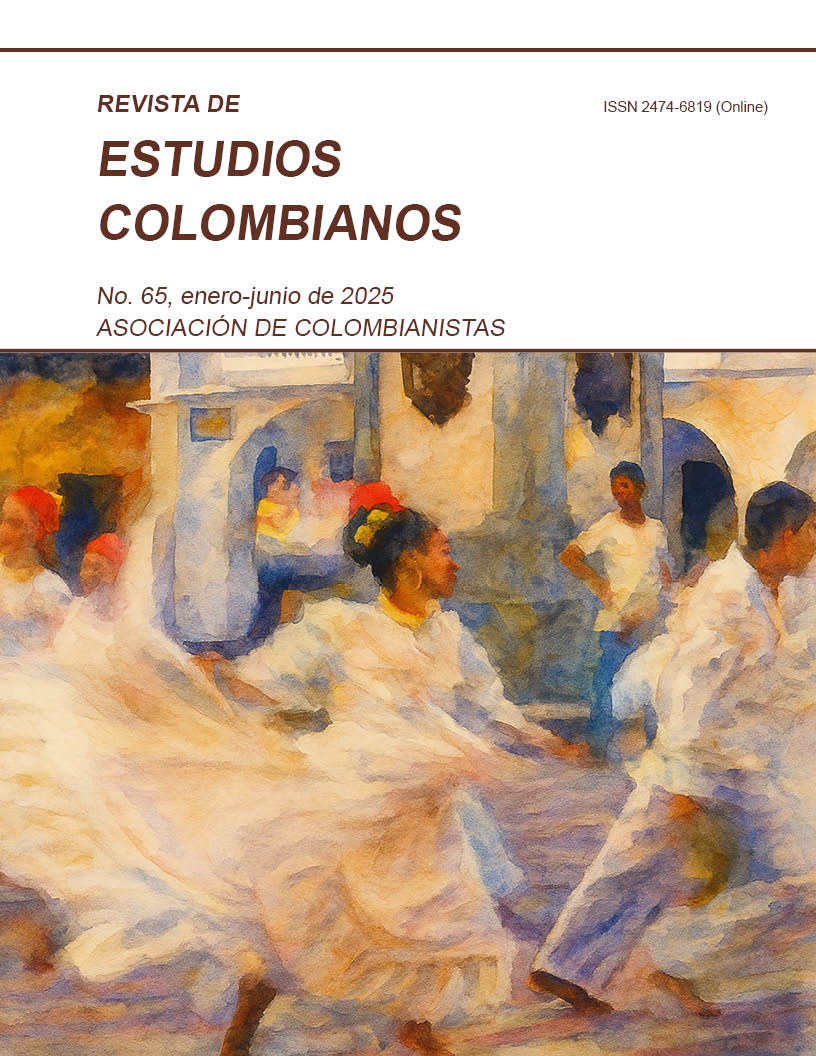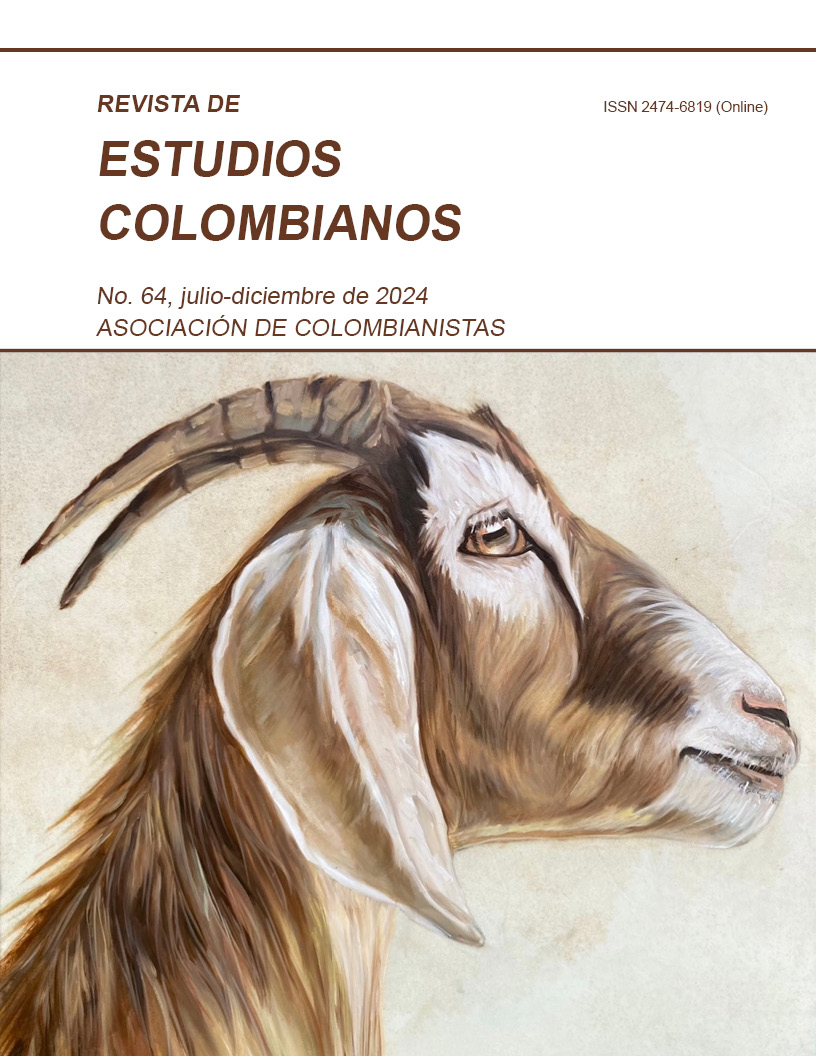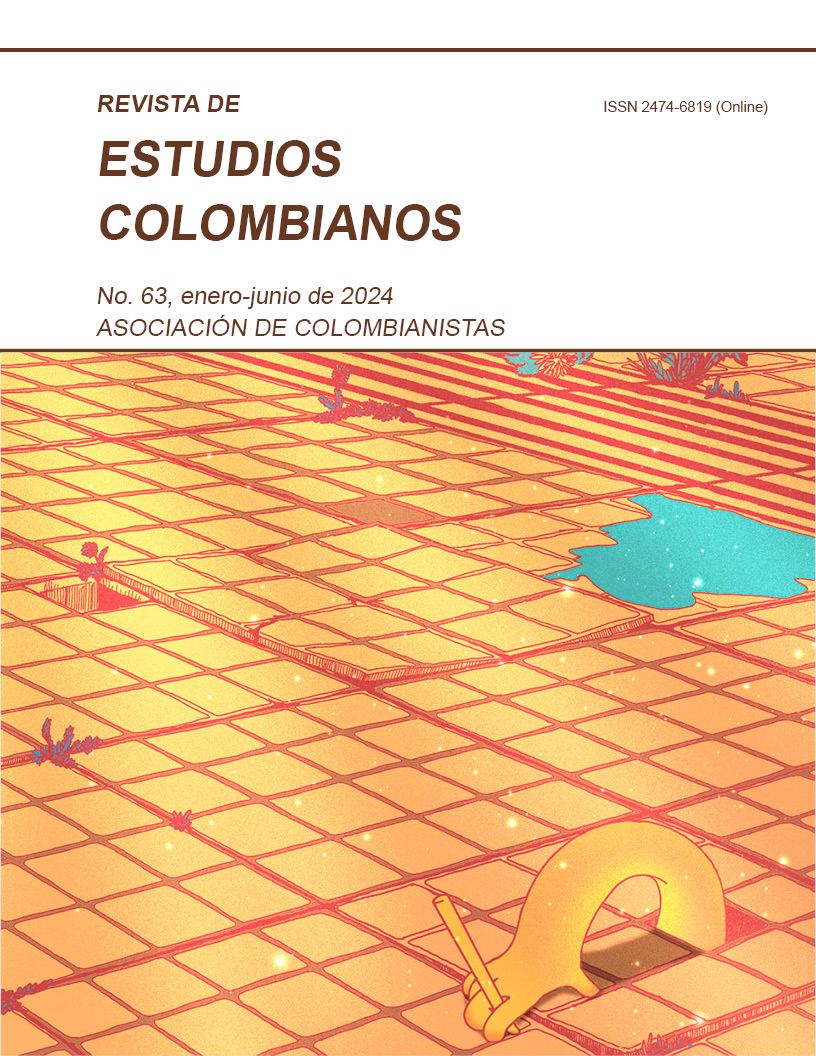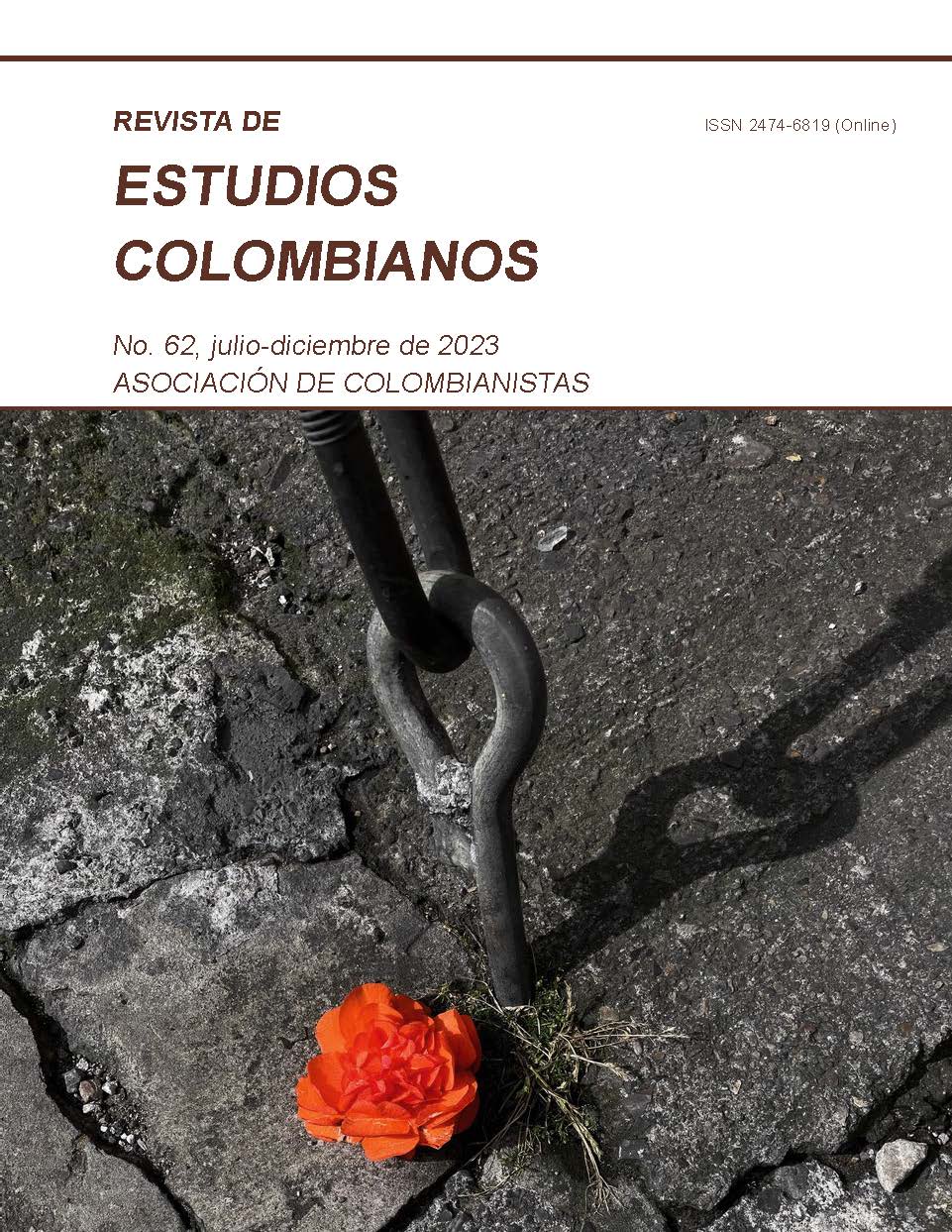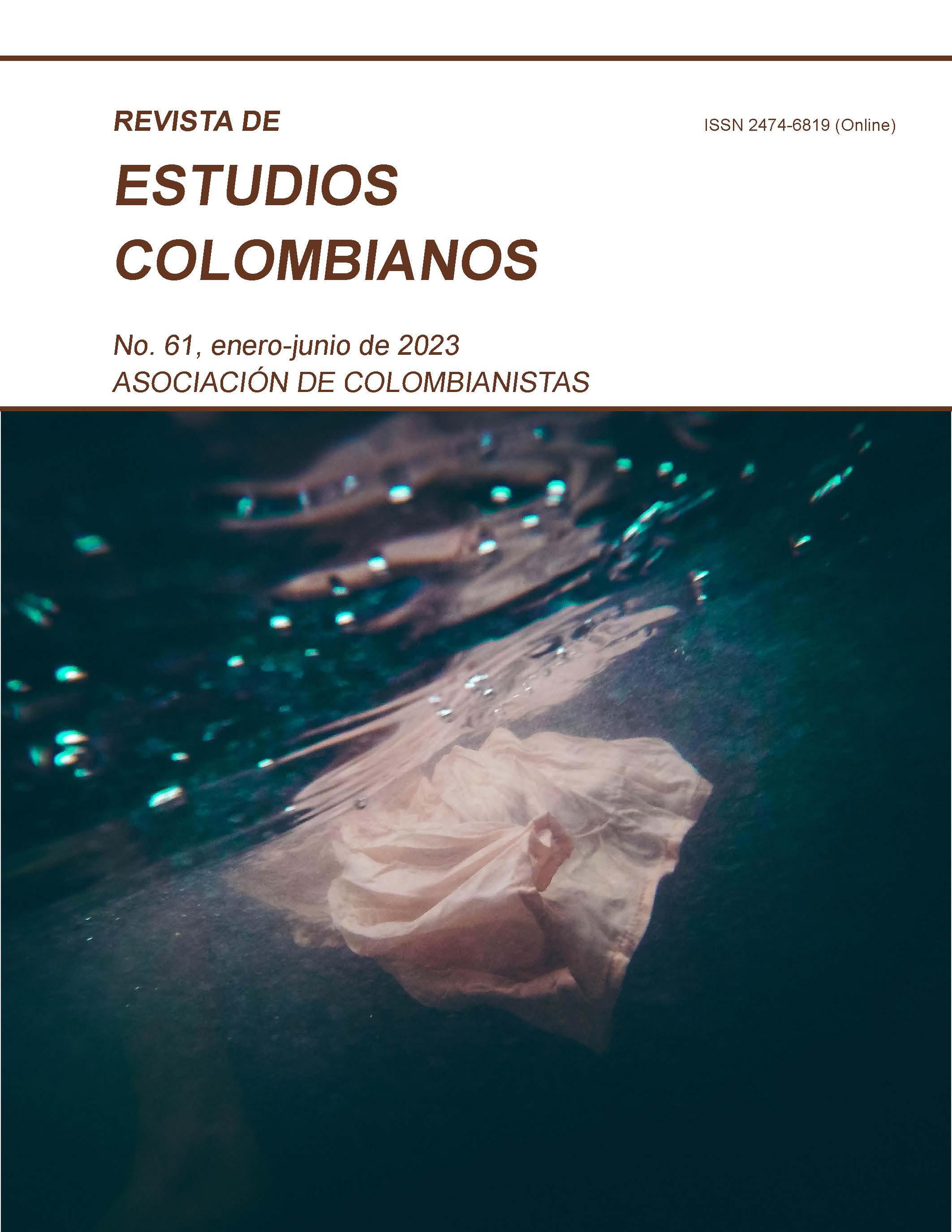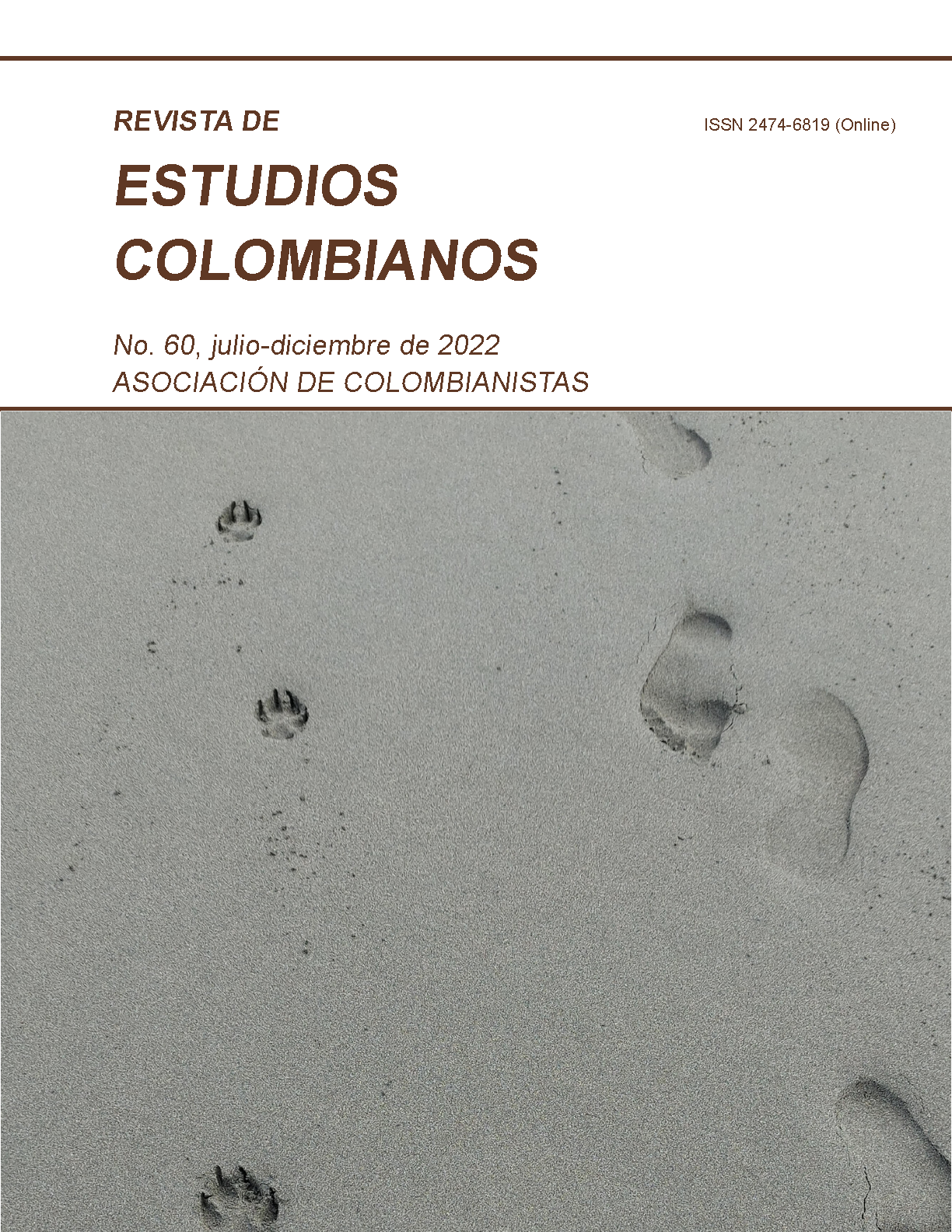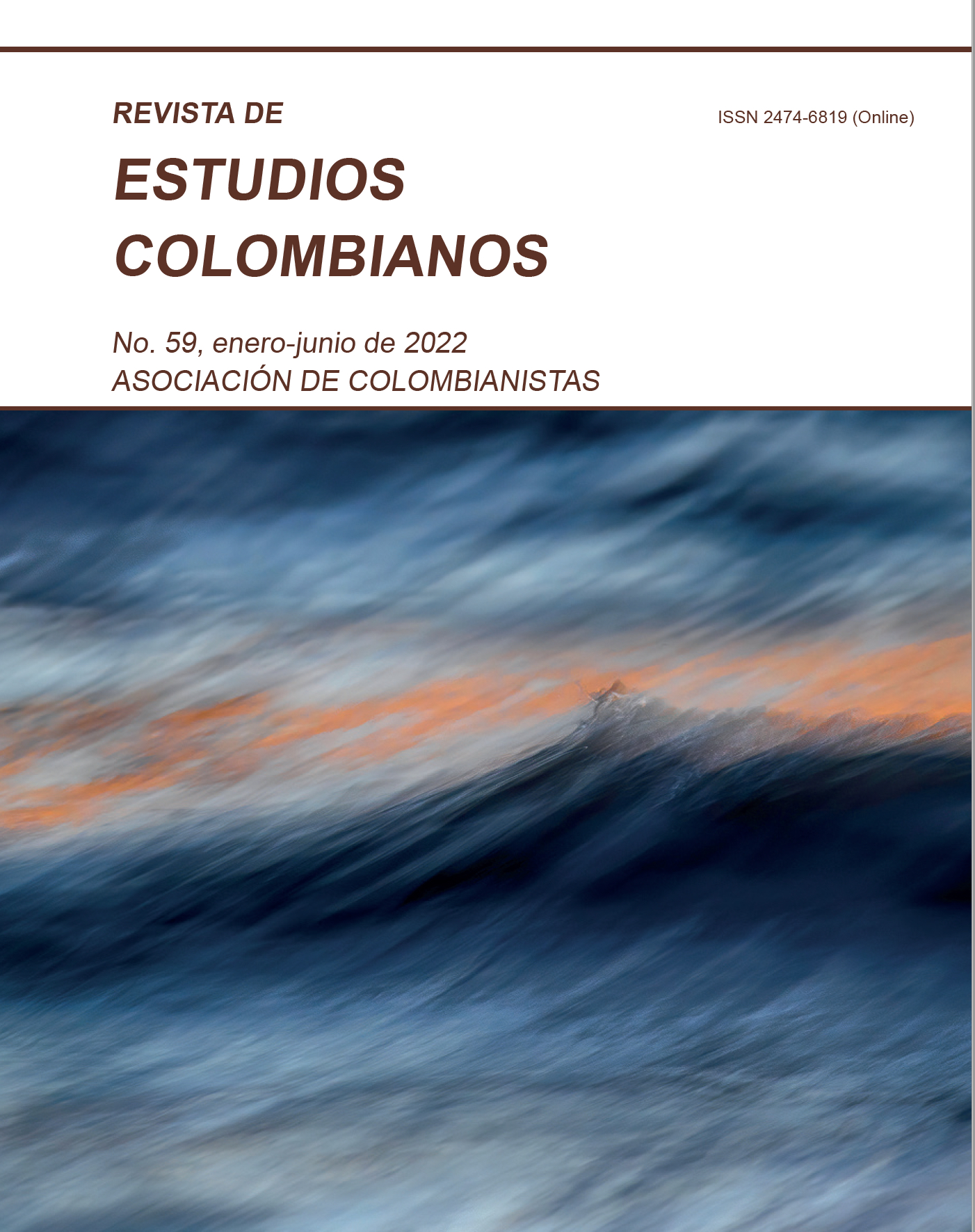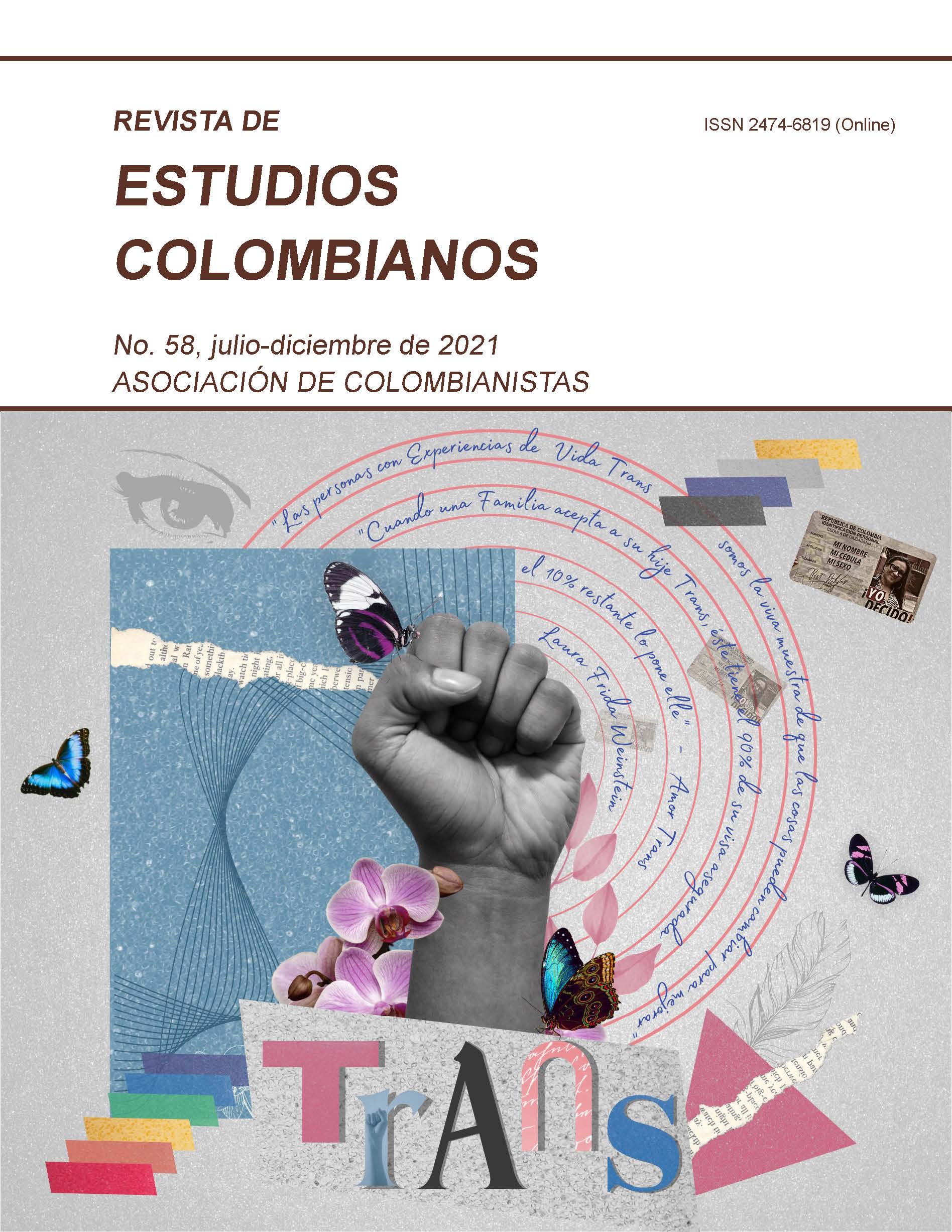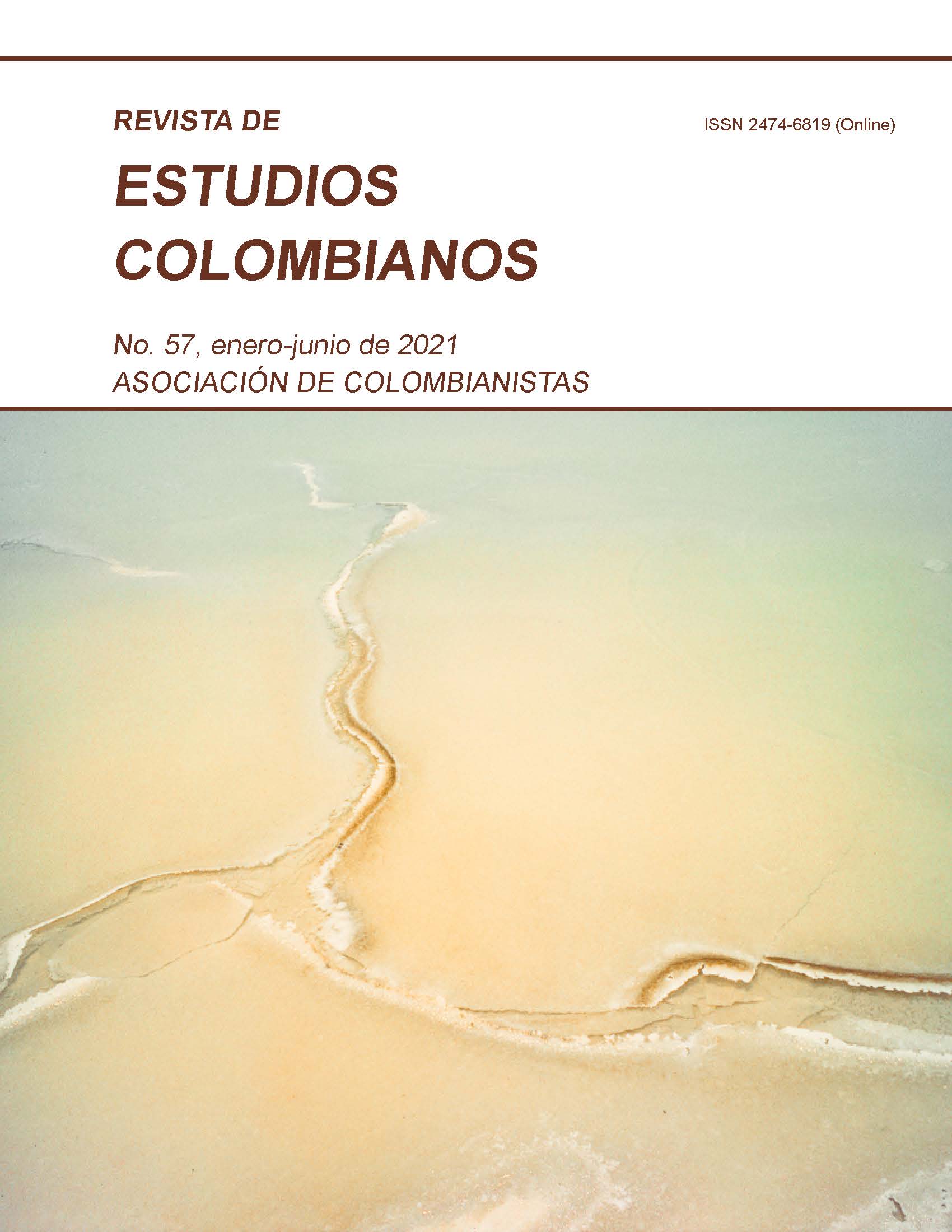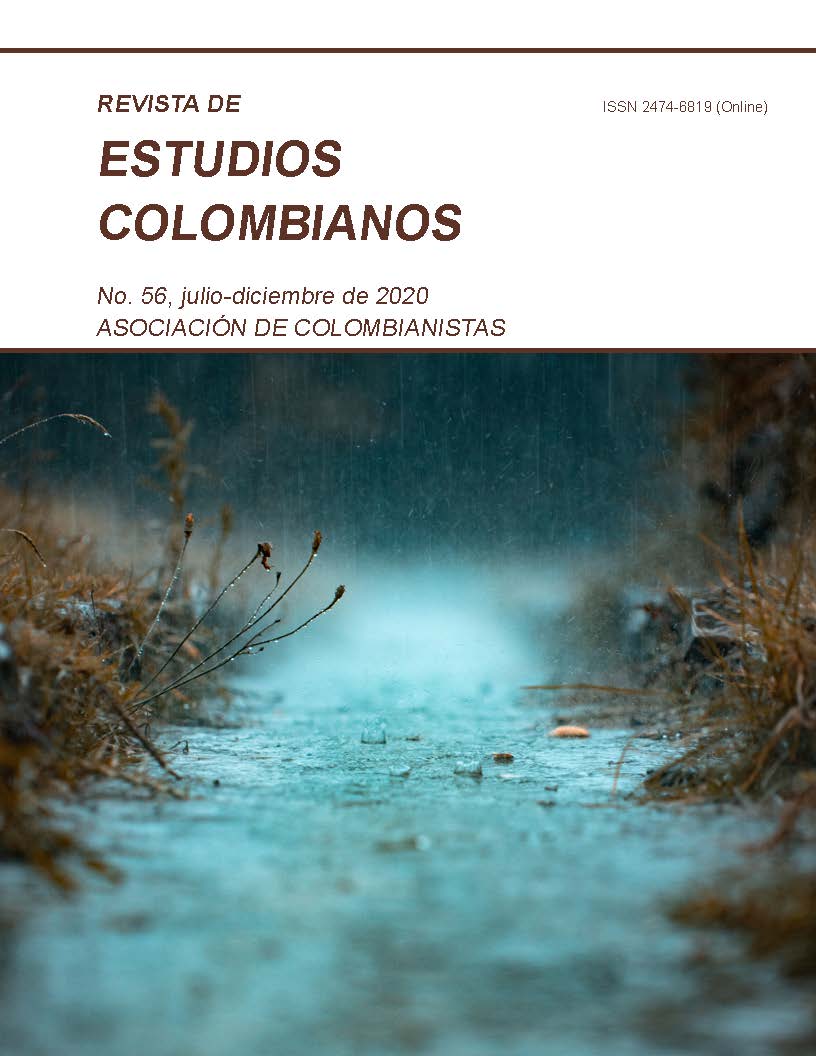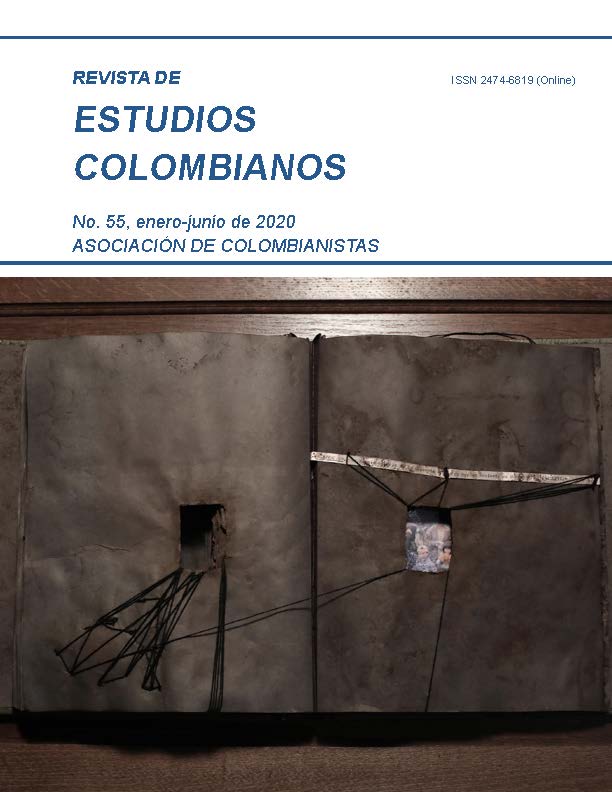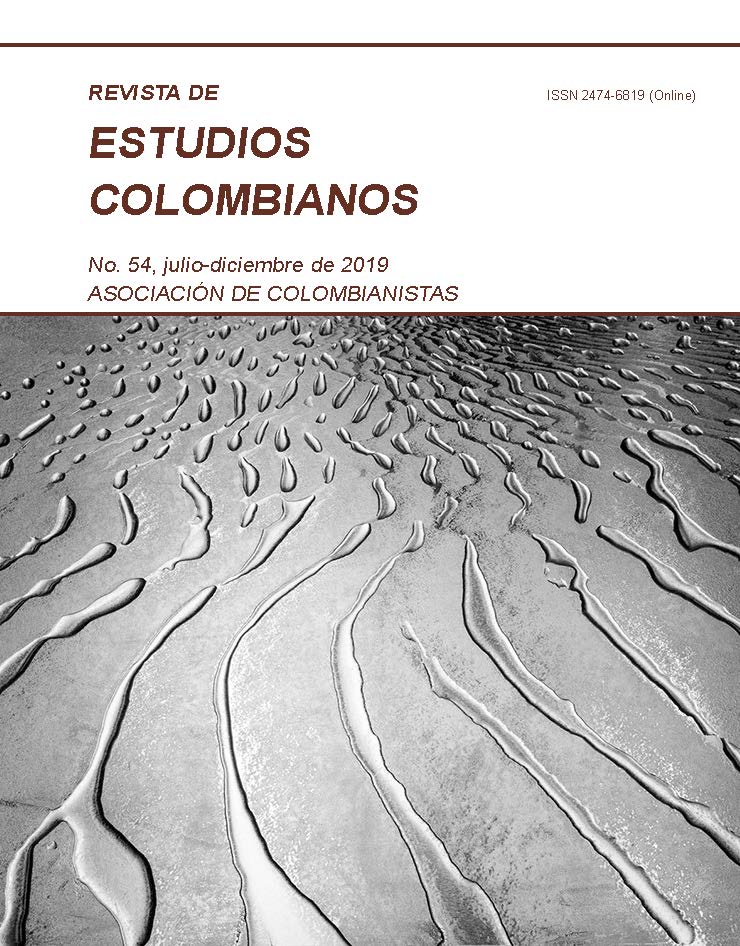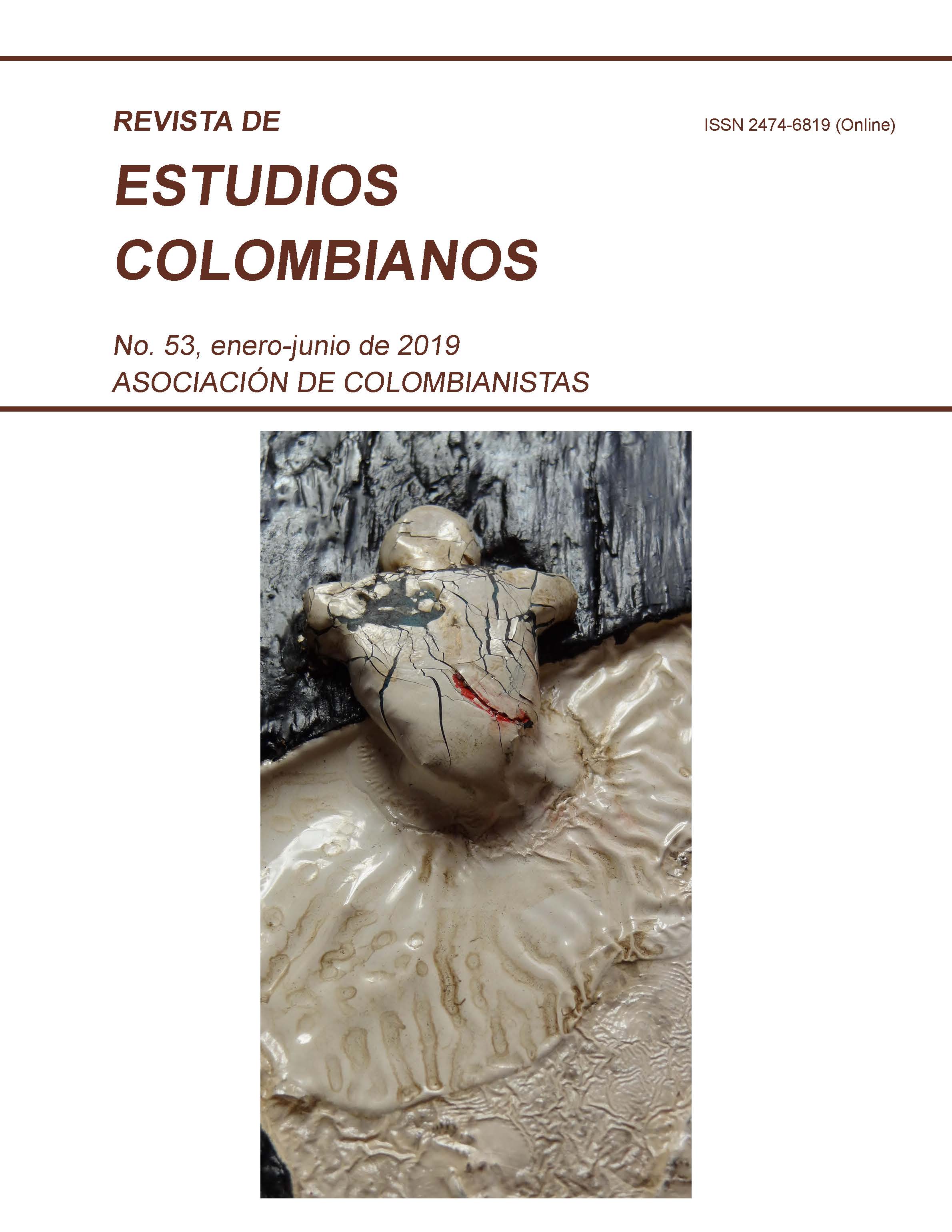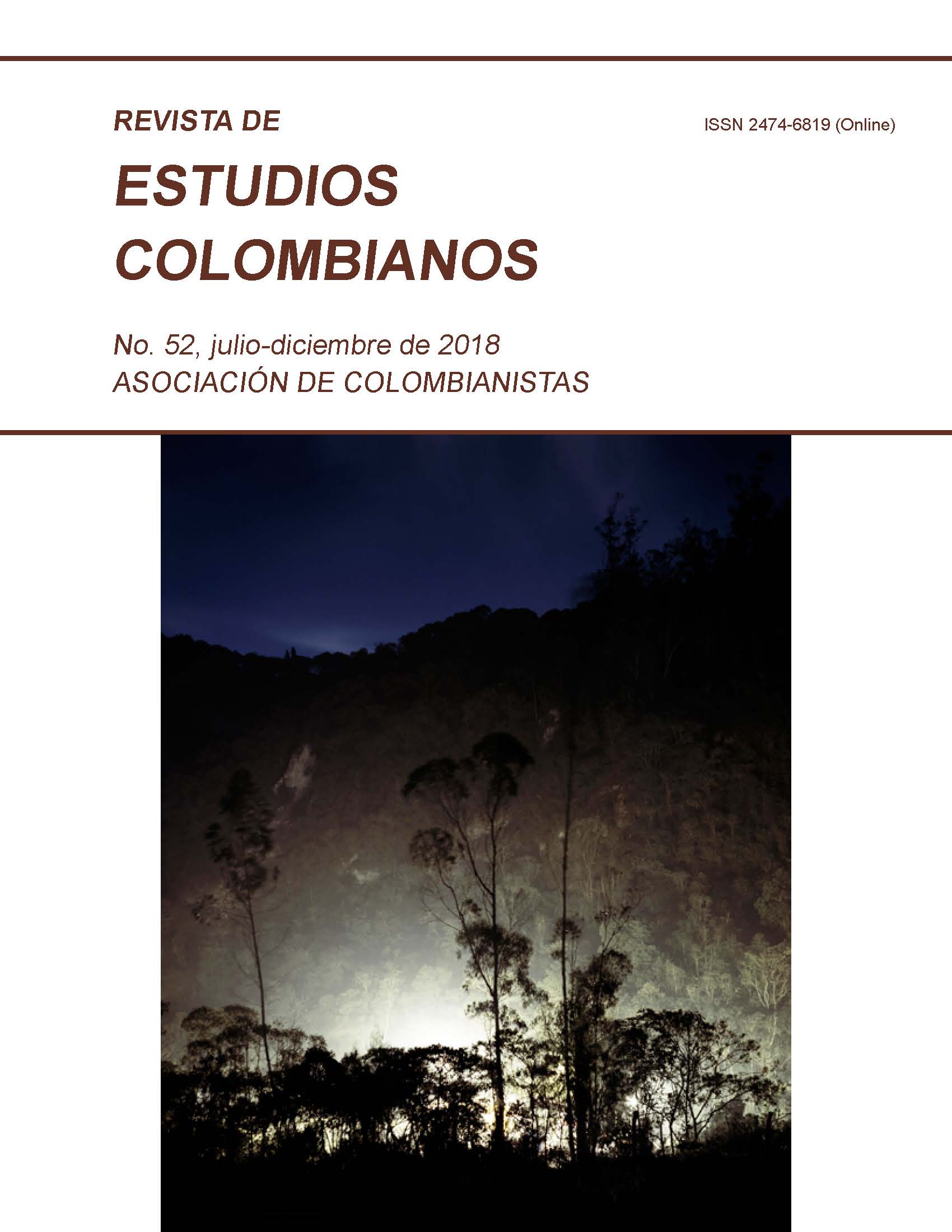Colombia Celebrates
Vol. 65 (2025)
“Cumbiamba en el corralito” is the image on this cover, which immerses us in the daily bustle of Plaza de los Coches in Cartagena de Indias, where dance groups bring joy to locals and tourists alike with the rhythms of cumbia, mapalé, bullerengue… and street hustle. The composition, designed in 2025 by the illustrator from Alicante, Fefeto, is inspired by a photograph taken by Carlos Tous in 2014. The skirts blur and merge with the dancers’ bodies in their flurry of movement, harmonizing with the heat and humidity of the surroundings—tangible through the texture and color palette used—while highlighting both the effort of the cumbia troupe and the admiration of the passing audience.
Fernando Fernández Torres – known as Fefeto – holds a degree in Advertising and Public Relations and a PhD in Communication from the University of Alicante. He has worked as a freelance illustrator and designer since 2006 for various institutions, media outlets, and audiovisual production companies. He is a member of the MASSIVA research group and an adjunct professor in the Art Department at Miguel Hernández University, where he teaches Graphic Expression and Animation. He combines his professional and teaching activities with personal artistic production, especially in the world of comics.
Vol. 64 (2024)
The cover image, Goat ID (I), is by Carolina Gutiérrez. Carolina was born in 1974 in Bogotá, Colombia. She studied Fine Arts at Los Andes University and earned her degree in Architecture at the same university. Her work has featured in several collective exhibitions in Bogotá, Barcelona, Tokyo and New York. In 2014, she attended the workshop of the artist Alyssa Monks, Creating, Translating and Surpassing the Photo-Reference, at the New York Academy of Art, New York. She also attended the Casey Baugh’s oil workshop in Chicago, in August 2017. In 2021, her work Facemask was selected in Figurativas 21, a contest organized by the Museu Europeu d'Art Modern MEAM in Barcelona. Today, Facemask, is part of the MEAM permanent collection.
"Carolina's work has always been related to her own life. It tells stories that have not been fully told, capturing past experience and future longings (which are always implicit in the image) in the physicality, the carnality, of the present moment. Her painting stems from the intimate observation of human skin, that place where personal history is imprinted and narrated in every stain, in every crease, in every wrinkle. We are what is seen on our skin, she seems to say, and that makes us susceptible to be read; it makes us, therefore, vulnerable. Her painting wants to explore that vulnerability, that risk we run before the gaze of others: her materials, oil and animal skin, speak to us of the sensual character of her exploration of the world. When Carolina inserts words in Braille language on the skin of her oil paintings, she asks us to meditate on the trace that emotions leave on the skin, and at the same time on touch as a form of knowledge: to touch the other is to understand. When she paints hands that communicate with sign language –for instance, in the series Historias de piel–, she wants to go beyond conventional communication. She asks us to see and understand and to participate in the creation of meaning; she asks us to interpret, to get involved, to attend to the other. Yes, that’s it: she asks us to see more attentively, to attend more intensely to the world of others."
--Juan Gabriel Vásquez
Traces of the Colombian Comic: One Hundred Years of Identity
Vol. 63 (2024)
The cover image is the work of Laura Valentina Álvarez Peña and Diana Jurado ("Niña Tigre"). The former is a visual artist and literature graduate (Pontificia Universidad Javeriana) and holds a master's degree in Design and Visual Communication (Universidad Nacional Autónoma de México). She has been working as an illustrator, comic artist, researcher, producer, and advisor for editorial and comic projects since 2015. Her experience is focused on both the editorial field and educational training in arts and literature. She has drawn documentary comics for the newspaper El Tiempo, ADN, and the fanzine Dr. Fausto. Additionally, she is the co-author of a biographical comic about Luis Carlos Galán. With the project "Hábitos Lectores," she creates responsible consumer objects and promotes reading. She conducts workshops and talks on illustration, visual narrative, and fanzines for both children and adults. For her part, "Niña Tigre," since 2015, has focused her work on the fields of Visual Arts and Literature, dedicating her full time to illustration. Her proposal is built around the exploration of graphic narratives, comics, and fanzines, both her own and community editions. She is also involved in cultural management and the promotion of comics in Colombia through exhibitions, workshops, and talks.
https://doi.org/10.53556/34gc2s55
Vol. 62 (2023)
Vol. 61 (2023)
The Colombian Pacific Coast: Life Rhythms from Juradó to Cabo Manglares
Vol. 60 (2022)
No. 59 (2022)
Essays and Experiences in Trans Colombia
No. 58 (2021)
Vol. 57 (2021)
Rory O'Bryen is Associate Professor in the Department of Spanish and Portuguese at the University of Cambridge. His publications include Literature, Testimony and Cinema in Contemporary Colombian Culture: Spectres of La Violencia (2008), Latin American Popular Culture: Politics, Media, Affect (2013), Latin American Cultural Studies: A Reader (2017), and Transnational Hispanic Studies (2020). His current research project focuses on the Magdalena River in the 19th and 20th centuries. He is editor of the Journal of Latin American Cultural Studies.
https://doi.org/10.53556/rec.v57i0
Vol. 56 (2020)
Narrative, Visual Arts and Film in Light of the Peace Accords in Colombia
Vol. 55 (2020)
Vol. 54 (2019)
The cover image belongs to the project wüin (“water” in Wayuunaiki), which sprouts from a number of trips to the Colombian Alta Guajira that have covered a large part of the region: Riohacha, Manaure, Uribia, Cabo de la Vela, Punta Gallinas, Taroa, Bahía Honda, Bahía Portete, Puerto Estrella, and Nazareth, to finally reach that paradise known as the Serranía de la Macuira. Some areas of the desertic Guajira peninsula have not had rain in more than five years, which is mainly due to El Niño phenomenon. Nevertheless, the problem increases if we consider the indiscriminate mining at the Serranía and the high level of corruption in the region. Due to the absence of paved roads, transport routes, health care centers, waste management facilities, sewage, aqueduct, primary and secondary education, and electricity (as well as to the scarce sources of renewable energy such as eolian and solar), the lack of drinkable water is only one more problem in a long list of difficulties and challenges that region endures. The Guajira, just as other regions in the country, has been gradually losing hope in the Colombian government after several administrations have continued to wear off the resources that are designated to these remote areas of the national territory.
